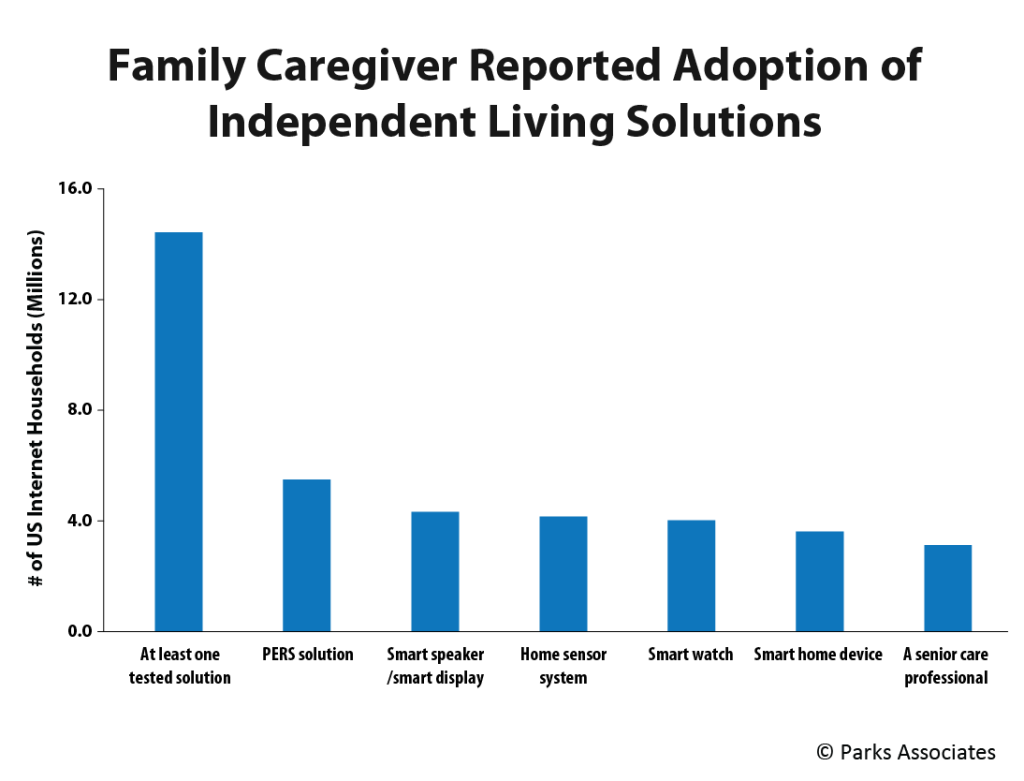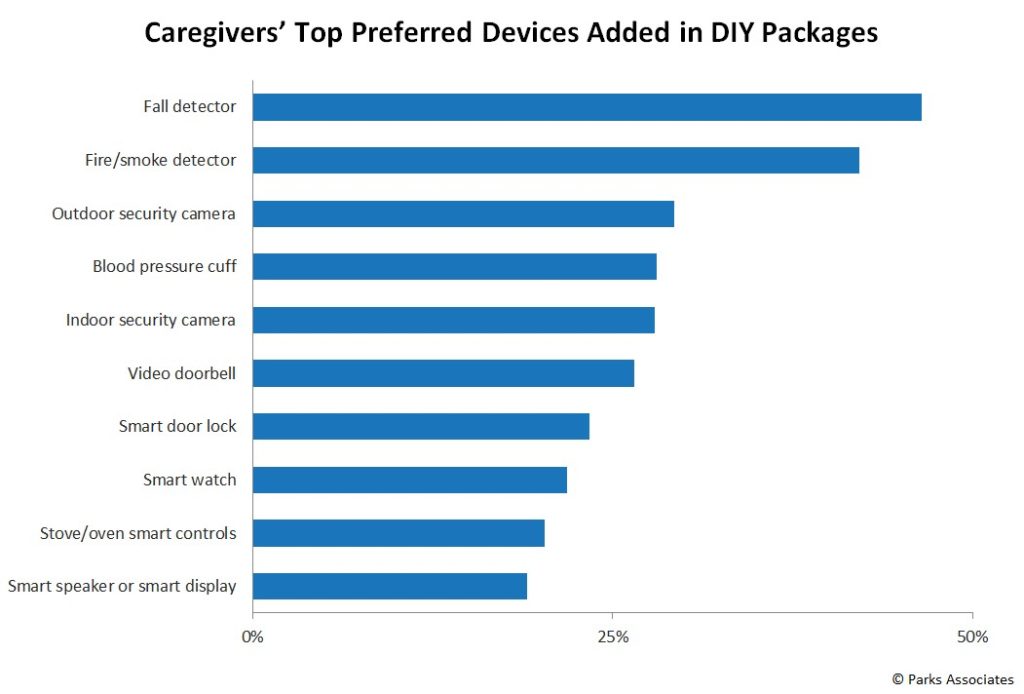The COVID-19 pandemic has receded in the rearview mirror of daily life for many people. Masks are trophies now, there to remind us, not to be used in all situations. Vaccines are considered a normal part of healthcare for millions, right up there with flu shots and the kid’s back-to-school inoculations. If you still can, working from home has many advantages; if you can’t, work in the office is back to normal, something we can all appreciate.
The changes the pandemic imposed, whether they are sticking around or not, made health a genuine issue for everyone. Technology, of course, became the coping mechanism for many, in the home office, on the smartphone or tablet, in every aspect of the daily routine. Most of that tech is still working for us. As an example, more than 14 million U.S. Internet households have used an independent living solution, such as personal emergency response (PERS), medical alert, or smart home systems.

Parks Associates reported that figure recently along with another: 54% of U.S. Internet households now have a connected health device and are looking for innovative technology solutions that are integrated and focus on communication, fall detection, and safety notifications especially around fire, water, and gas detections. Healthcare services can be extended by existing providers in the home, like those that monitor home security systems, or by specialized companies often working “in the cloud.”
According to Parks Associates, the ideal connected home will not only make life safer and healthier for the senior, but also less stressful for the caregiver. In the connected health industry, the need is to reimagine the role that smart home devices, security devices, and other in-home devices play for those wishing to age in place and provide solutions that are insightful, interoperable, and preventative.

Seniors and Kids
And seniors are not the only population that can benefit. In general, 55% of U.S. Internet households report using telehealth, down from 64% in 2021, at the height of the pandemic. Additionally, having children at home is a key factor for interest in and usage of telehealth services—74% of U.S. Internet households with children at home have used telehealth services in the past 12 months versus 32% without kids at home. Seventy percent of households with children at home are likely to use telehealth services the next time they are sick.
“The COVID-19 pandemic, more than anything else, showed the vulnerabilities and shortcomings in health systems worldwide and emphasized the critical role technology plays as the solution. In the future, advances in sensor technology, coupled with edge and AI, will bring possibilities in healthcare that were unthinkable before,” notes Fereydoun Taslimi, CEO, SensorsCall.
A faint “silver lining” on the cloud that passed over the world these past years, a cloud called COVID-19, can be found in the adoption of more technology to ensure healthcare access, from home or wherever you go, as telehealth grows in popularity. And while some telehealth solutions depend on that “other” tele—the telephone—most are based on computer programming and dependable Internet connections. As new homes go up, that need should be always in the architect’s and builder’s minds. Designing and building homes that can be used for aging-in-place as well as work-from-home and raising-the-children populations will make them endure even the next pandemic.
Want to tweet about this article? Use hashtags #construction #sustainability #IoT #AI #5G #cloud #edge #futureofwork


